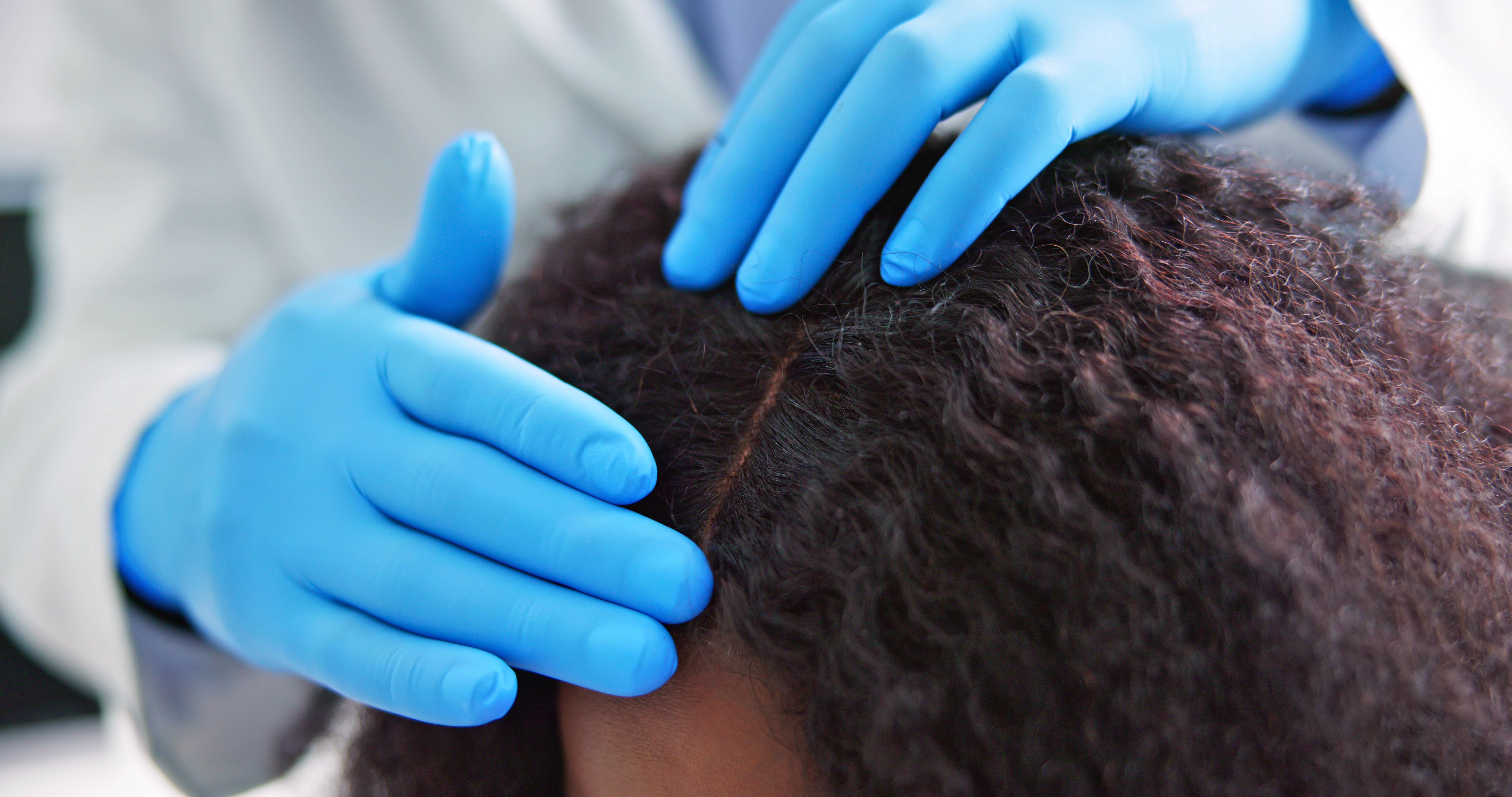- Center on Health Equity & Access
- Clinical
- Health Care Cost
- Health Care Delivery
- Insurance
- Policy
- Technology
- Value-Based Care
Light Therapy Clothing Shows Potential for Mild Psoriasis, PMLE, AA Treatment
Red and near-infrared–emitting fabric clothing may improve symptoms of mild psoriasis, polymorphous light eruption (PMLE), and alopecia areata (AA), but further research with larger groups is needed due to limitations in the pilot study design.
Dermatologist checks woman's scalp. | Image Credit: Andrey Popov - stock.adobe.com

Improved levels of disease severity were found in patients with mild elbow psoriasis, polymorphous light eruption (PMLE), and limited alopecia areata (AA) after red and near-infrared (NIR)–emitting fabric treatment.
Researchers conducted a pilot study to investigate potential benefits of clothing embedded with red and NIR–emitting fabric technology, with findings published in Journal of Dermatological Treatment. Participants were recruited from August 2022 to February 2023. They were either seen at the Atrium Health Wake Forest Baptist's dermatology clinic in North Carolina or identified through the Department of Dermatology database.
Low-level light therapy (LLLT) or photobiomodulation is a light-based therapeutic modality that involves a cascade of cellular responses to the absorption of nonablative red and NIR light energy. The apparel is designed to be worn in direct contact with the skin under ambient light during extended periods of time. Lumiton, the yarn used for LLLT apparel, is embedded with light-emitting dyes that absorb wavelengths in the visible red UV spectrum and emit wavelengths in the red to NIR region.
The study recruited 14 participants with elbow psoriasis (n = 5), PMLE (n = 5), and AA (n = 4). For elbow psoriasis and PMLE, researchers offered a choice between a long-sleeved shirt or a pair of sleeves for targeted light therapy. Participants with AA received a baseball cap designed for the same purpose.
In addition to the red and NIR–emitting fabric worn by all participants, patients continued their existing treatment regimens. Among the psoriasis patients, 1 used methotrexate with a home light unit, 2 used methotrexate with topical corticosteroids, and 2 received a systemic immune modulator. For PMLE, 1 patient used topical corticosteroids, whereas 3 relied on sun-protective measures. All 3 patients with AA who completed the study had received intralesional triamcinolone injections 3 months to 1 year prior to the treatment period.
Study methods instructed patients to continue their previous treatment regimens while wearing the garment every day for 12 weeks both inside and outside. From there, the number of hours the garment was worn was recorded. The level of disease severity and garment comfort were recorded among patients across all groups.
The study involved a small group of patients with psoriasis (n = 5), with a median age of 42. Most of the participants (80%) were female, and the racial makeup was predominantly White (4 patients) with 1 Black patient. Two patients with elbow plaque psoriasis reported improvement in redness, thickness, and scaling, whereas another patient's condition remained stable. Of the 3 patients who successfully completed the study, 2 found slight improvement and 1 recognized moderate improvement.
Participants diagnosed with PMLE (n = 5) had a median age of 57 years and 80% were female; 3 identified as White, 1 identified as Black, and 1 identified as Asian Indian. Only 3 of the 5 patients completed the study but none of them reported PMLE flares during the study period. Two patients self-proclaimed slight improvement while 1 reported moderate improvement.
Patients with AA (n = 4) had a mean age of 28 years, with 50% female, 2 White patients and 2 Black patients. A total of 3 patients completed the study and demonstrated an improved Severity of Alopecia Tool score. Patient observed improvement was reported that 1 patient had slight improvement, 1 communicated moderate improvement, and 1 reported no improvement.
The study aimed to prove the concept, but the small sample size limited its ability to draw statistically significant conclusions. Additionally, researchers restricted enrollment to patients with a specific range of lesion severity in both psoriasis and AA. Furthermore, because most participants relied on topical and systemic treatments, it was difficult to isolate the potential benefits of the fabric technology itself.
Red and NIR–emitting fabric technology may offer promise for improving mild psoriasis, PMLE, and AA. However, the limited number of participants and continued use of existing medications necessitate further investigation with a larger, controlled trial to definitively determine the efficacy of this novel therapeutic approach.
Reference
Pixley J, Chandy R, Richardson I, Jorizzo J, Feldman S. Could red and near-infrared emitting fabric technology improve the severity of psoriasis, polymorphous light eruption, and alopecia areata? J Dermatolog Treat. 2023;34(1):2251619. doi:10.1080/09546634.2023.2251619
The Breakdown: Breast Cancer Research Awareness Day
August 19th 2025Breast cancer is the second most common cancer among women and the second leading cause of cancer-related deaths among women in the US. In light of Breast Cancer Research Awareness Day, The American Journal of Managed Care® breaks down the most recent advancements in breast cancer prevention, screening, and therapies.
Listen
